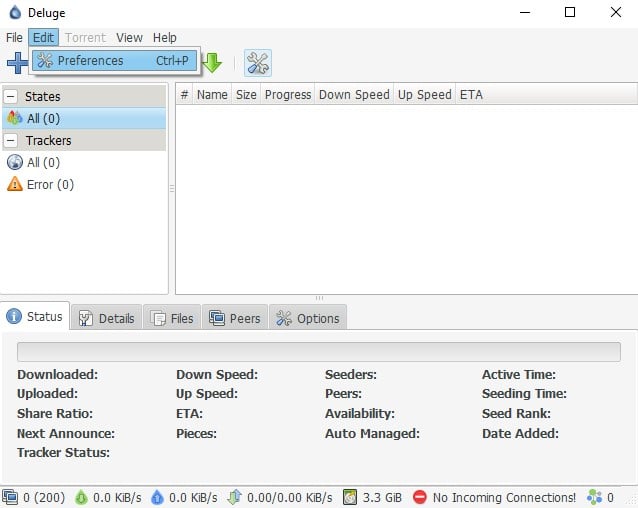
The change to the download location within nf has to be made at the following line: "download_location": "/mnt/sda1/deluge/", In line with the discussion earlier, you may edit the various folder options through the Web UI or the nf file. OR You can now configure Deluge as desired, either through the web interface or using nano as follows (recommended that you stop Deluge prior to making the config changes through the terminal): /opt/etc/init.d/S80deluged stop Start Deluge and its Web UI: /opt/etc/init.d/S80deluged startĪccess the Web UI at port 888 (default password is "deluge"): torrent files from" options and update the configuration accordingly. If you wish, you may create separate directories for the "Download to", "Move completed to, "Copy of. Note: You will have to add the data directory to the Deluge configuration (discussed below).

Install the nano editor (unless you are already comfortable with the vi editor): opkg install nano Enable the JFFS partition (as explained here).
Deluge bittorrent client has disappeared but is running how to#
If not, look on the web for information on how to reformat your disk. I will also assume that your disk is already formatted as either Ext2 or Ext3. Initial configurationįor this, I will assume your disk is mounted as /mnt/sda1/ (just adjust the paths as needed if yours is mounted as /mnt/sdb1 instead, for instance).

It is free, open source software and aims to be a lightweight, secure, feature-rich client. Introductionĭeluge is a BitTorrent client written in Python.

I have tested it on my AC68U, but assume it will work just as well on other Entware enabled ARM routers running Asuswrt-Merlin. This tutorial is based on the "Installing Transmission through Entware" tutorial by TeHashX.


 0 kommentar(er)
0 kommentar(er)
